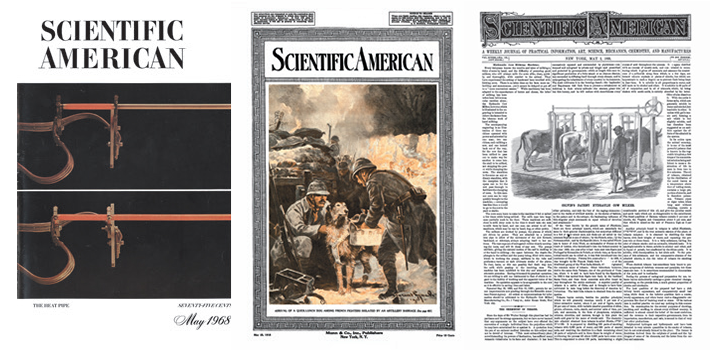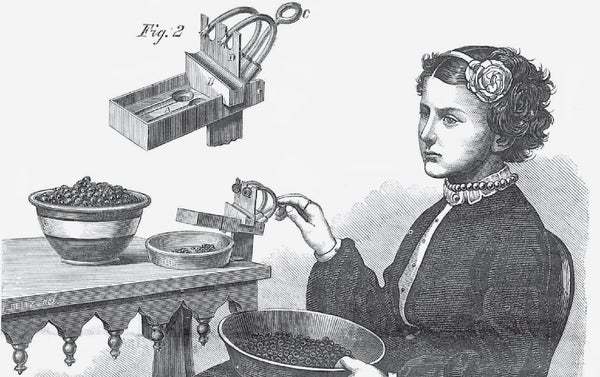1968
The Moon, Unveiled
“In a corridor of the Boeing Space Center near Seattle there is a little sign that reads ‘5 for 5.’ The sign briefly summarizes the fact that all five Lunar Orbiter missions, which were primarily designed to make photographs of the moon from spacecraft in lunar orbit, were successful. The results included complete photographic coverage of the side of the moon that is visible from the earth and coverage of more than 99.5 percent of the side that cannot be seen from the earth. The Lunar Orbiter series was one of three programs organized by the National Aeronautics and Space Administration in preparation for the Apollo missions in which men will land on the moon. The five Lunar Orbiter spacecraft made a total of 1,950 photographs. NASA has used them to select five potential Apollo landing sites from some 40 candidates that had been identified from Earth-based observations.”
On supporting science journalism
If you're enjoying this article, consider supporting our award-winning journalism by subscribing. By purchasing a subscription you are helping to ensure the future of impactful stories about the discoveries and ideas shaping our world today.
1918
Women's War Production
“As reported in dispatches from London, the Minister of Munitions said: ‘Barring unforeseen circumstances, our supply of munitions would enable us to carry on a battle at the supreme pitch of intensity until winter without compromising our requirements for 1919.’ We have all known that women are doing great work during the present war; but we were scarcely prepared for the astonishing statement, that more than nine-tenths of this huge output of shells is due to the labors of more than three-quarters of a million women, who, before the war, had never seen a lathe.”
Aerograms
“It is self-evident that if an airplane can fly hundreds of miles with a cargo of bombs in all kinds of weather and under the most adverse conditions, surely the same machine can be made to fly with a cargo of mail or light merchandise or passengers in times of peace. It has remained for these United States to inaugurate the first aerial mail service really worthy of the name, between New York, Philadelphia and Washington. While we are not strictly the first nation to establish an aerial mail service, to be sure, we are undoubtedly the first to inaugurate a regular mail service through the air operating on a rigid schedule and opened to the public.”
1868
A Greenhouse Climate
“The primitive atmosphere of the earth was greatly richer in carbonic acid gas [carbon dioxide] than the present, and therefore unfit for the respiration of the warm-blooded animals. The agency of plants in purifying this atmosphere was long ago pointed out. Dr. Tyndall's researches on radiant heat found that the presence of a few hundredths of carbonic acid gas in the atmosphere, while offering almost no obstacle to the passage of the solar rays, would suffice to prevent almost entirely the loss by radiation of obscure heat, so that the surface of the land, beneath such an atmosphere, would become like a vast orchard house, in which the conditions of climate necessary to a luxuriant vegetation would be extended even to the polar regions.”
Spiritualism
“Prof. Pepper has been doing, this last winter, a great work before the thousands who nightly visit the London Polytechnic Institute. Besides explaining the latest discoveries in electro-magnetism, light, etc., he discoursed on spiritual manifestations, pointing out the extensive impostures that have been practiced on the public in the name of mesmerism and spiritualism. He illustrates his lectures with startling illusions, such as the floating in the air of hats, tables, and even stout ladies. He does not only everything that spiritualists have pretended to do, but a great deal more; with this difference, however, that he explains how it is done.”
The Fruits of Labor
“The preparation of fruit for culinary purposes or preserving is a monotonous and tiresome labor, at least the work of removing the seeds or pits. To facilitate the operation and render the task less irksome is the object of the inventor, from Illinois, of the neat little implement shown in the engraving. It never fails to remove the pits from cherries and the seeds from raisins, grapes, cranberries, etc., leaving the fruit in excellent condition without crushing or bruising it.”

